Local Fairies and Hill-Forts
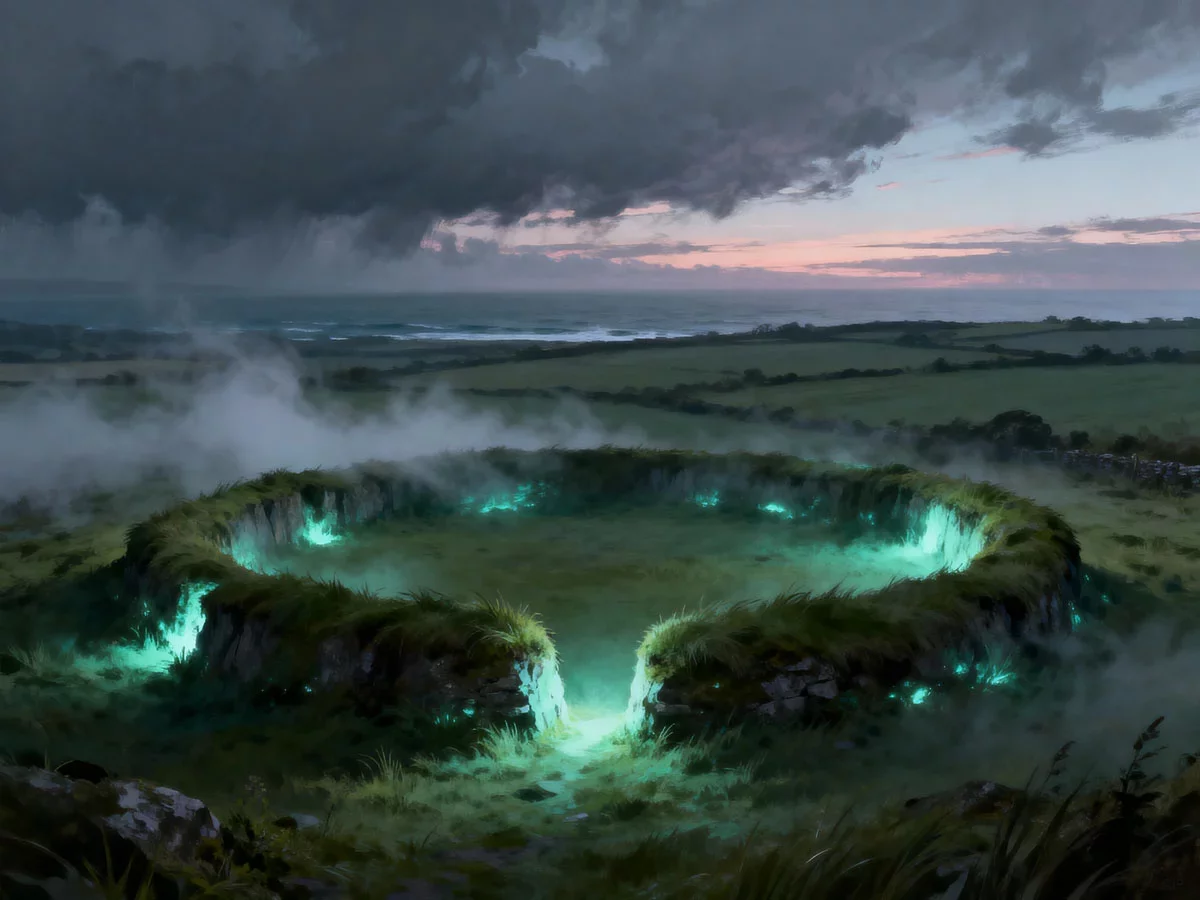
The Story: Living with the Good People
The old stories teach that we are not alone on this island. Parallel to our own world, existing just beyond the veil of our senses, is another kingdom. This is the realm of the Aos Sí (the People of the Mounds), a proud, beautiful, and dangerously powerful race who are best not spoken of directly. It is why they are called "the Good People" or "the Gentry"—polite names used to avoid causing offence, for their anger is a terrible thing.
They are the descendants of the great Tuatha Dé Danann, the gods of ancient Ireland. When mortals conquered the island, the Danann did not leave; they simply retreated. They went underground, making their palaces in the hollow hills and, most importantly, within the ancient ringforts—the liosanna and cathracha—that dot the landscape of Clare. To the modern eye, these are simply mounds of earth and stone, the ruins of ancient farms. But in the world of folklore, they are gateways, shimmering portals to the Otherworld. At liminal times—dusk, dawn, or on the great festivals of Samhain and Bealtaine—the walls between the worlds grow thin, and the Gentry ride forth.
Living so close to such power requires a strict code of conduct, a set of rules passed down not in books, but in cautionary tales told by the fireside.
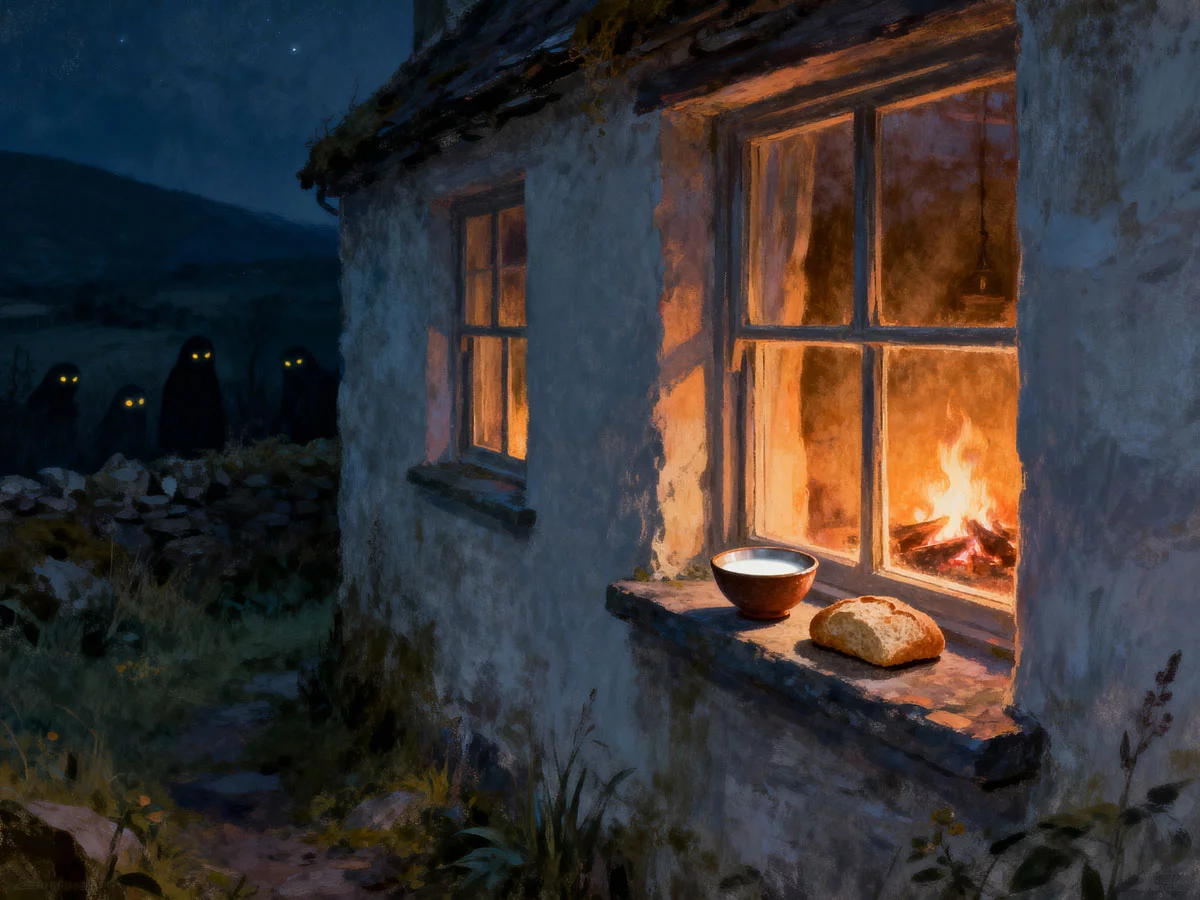
The first rule is Respect. These forts are not to be touched. A farmer might be short of stone for a new wall, and the fort on his land is a convenient quarry. But his neighbours would warn him with a story. They’d tell of a man who did just that, and the next morning his prize cow was dead in the field. They’d tell of another who ploughed the fairy mound to expand his crops, and his fields withered while his children took a strange, wasting sickness. The trouble would not end until he returned the stones and made an offering to appease the angered residents.
The second rule is Hospitality. For those who live near a fort, it is wise to show deference. This meant leaving a bowl of fresh milk or a piece of good bread on the windowsill at night. It was an offering, a small tax paid to the unseen landlords of the area, ensuring their goodwill and protecting the home from their mischief.
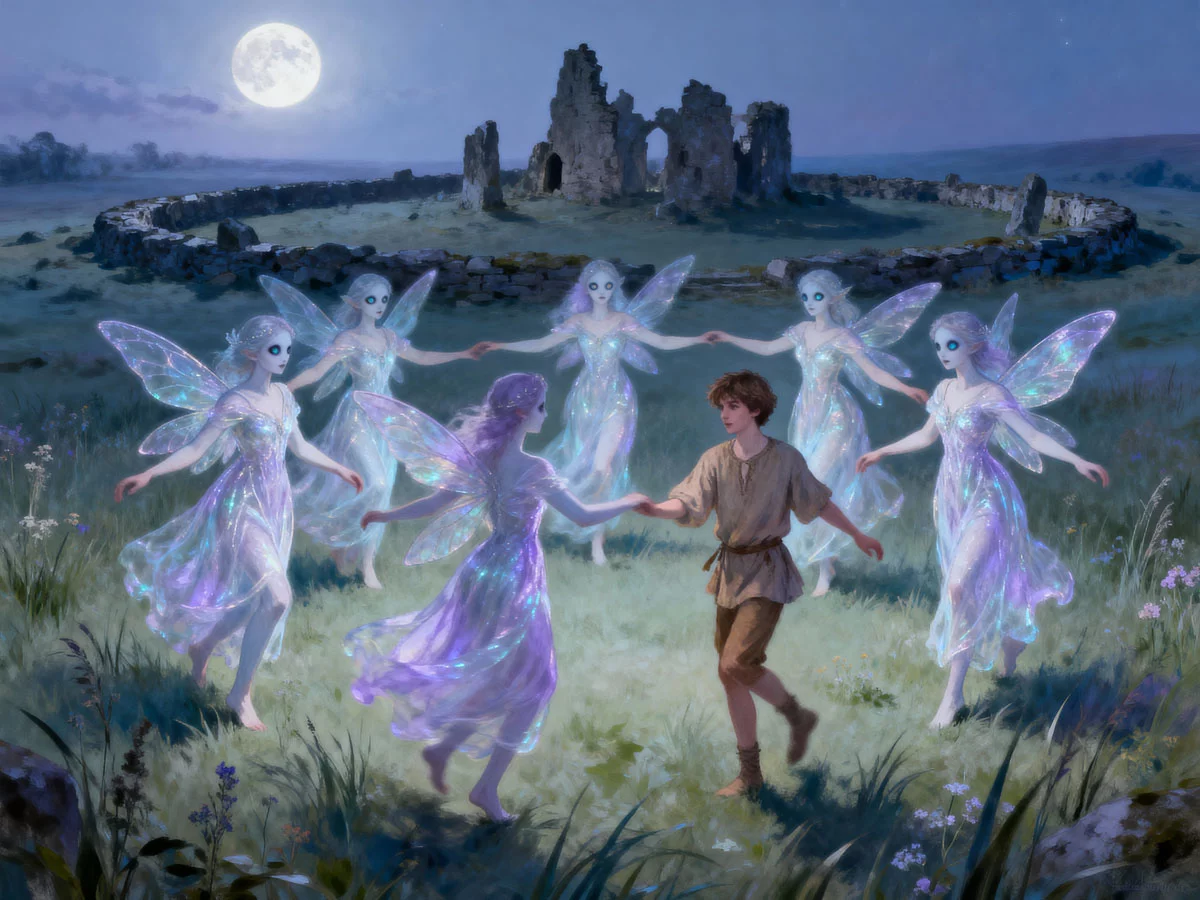
The third rule is Caution. The Good People are alluring, and their world is a trap for the unwary. A young man walking home on a moonlit night might hear music drifting from a local fort—music so beautiful and enchanting it makes the heart ache. If he is foolish, he will follow it. He will find a party, a fairy revel, and be swept into a dance. He will dance for what feels like a single, joyous night, only to stumble out at dawn and find the world utterly changed. The fields are different, his home is a ruin, and a hundred years have passed in the mortal world. He has been lost to the fairy dance.
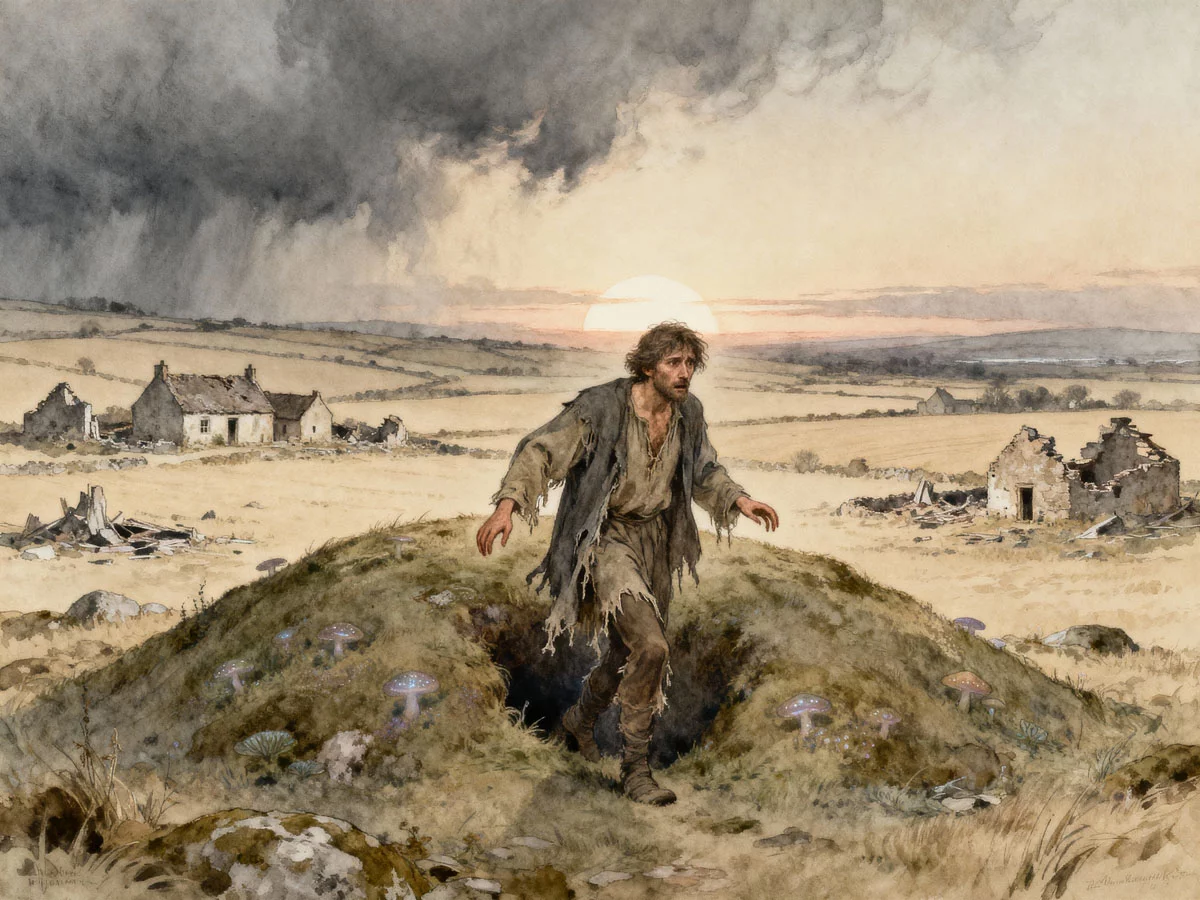
This belief system colours the entire landscape, turning a simple walk through the fields into a journey on the border of another world, a world that demands respect, fearsome and beautiful in equal measure.
Analysis: The Architecture of Belief
The folklore of the fairy forts is a complex and sophisticated system for understanding the world, preserving the past, and navigating the unknown.
From Gods to Fairies: This belief system is a direct look at how one religion evolves into another. The Aos Sí are the Tuatha Dé Danann, demoted. When Christianity became the dominant religion, the old gods couldn't simply be erased, as they were too integral to the culture and the land itself. Instead, they were downsized from powerful, national deities into local, often mischievous, supernatural beings. The fairy faith is pre-Christian belief surviving in a Christianised world.
A Charter for Conservation: The powerful and fearsome taboos against damaging the forts served as an incredibly effective heritage conservation policy. Long before archaeological protection acts existed, the fear of angering "the Gentry" protected thousands of ancient ringforts, mounds, and standing stones from being destroyed by agriculture or development. The folklore, in a very practical sense, preserved the physical remnants of the ancestors.
Explaining the Inexplicable: In a world before modern science and medicine, the fairy faith provided an explanation for the random and often cruel nature of life. A sudden illness in a person or animal could be attributed to a "fairy dart" or "elf-shot." A baby born with an unexplained ailment or a "failure to thrive" might be tragically explained as a changeling—a sickly fairy stock left in place of a stolen human child. A sudden turn of good luck was a reward for respectful behaviour. It was a framework for understanding a world of uncertainty.
The Power of the Liminal: The focus on forts as "portals" and certain times like dusk or Samhain as being magically potent highlights the importance of liminality in the Celtic imagination. These "in-between" places and times are where the veil between worlds is thinnest and where mortals must be most careful. This worldview suggests that the sacred and the profane, the natural and the supernatural, are not entirely separate but are in a constant, delicate, and often dangerous negotiation.
More Folklore
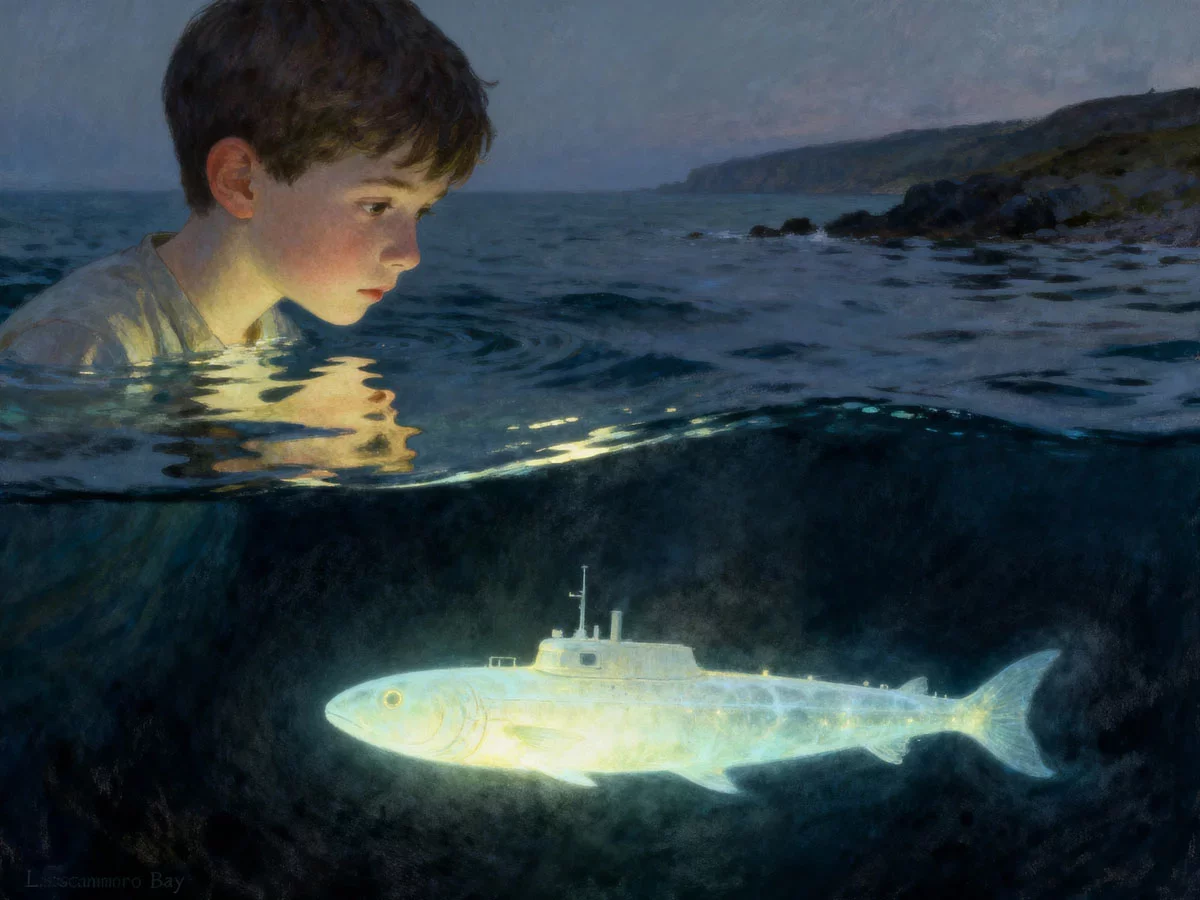
John P. Holland’s Submarine Dream
Liscannor-born inventor John P. Holland is treated as a local folk hero. His world-changing idea for a submarine is said to have been inspired by watching the sea in his home village as a boy.
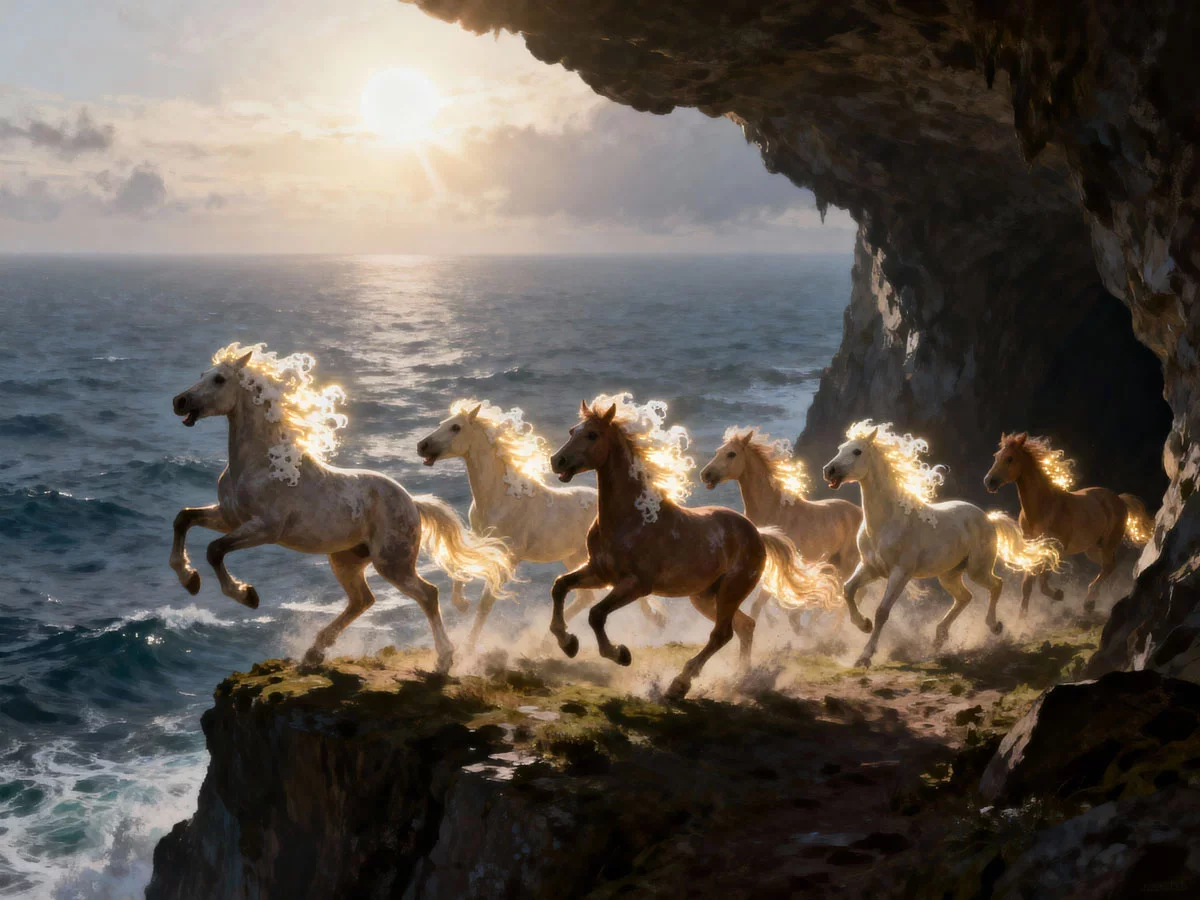
The Leap of the Foals (Aill na Searrach)
A group of the Tuatha Dé Danann, the old gods of Ireland, transformed into horses to hide from Christianity in a sea cave. After centuries, seven foals born in the dark emerged, were blinded by the sun, and tragically galloped off the cliff to their deaths.